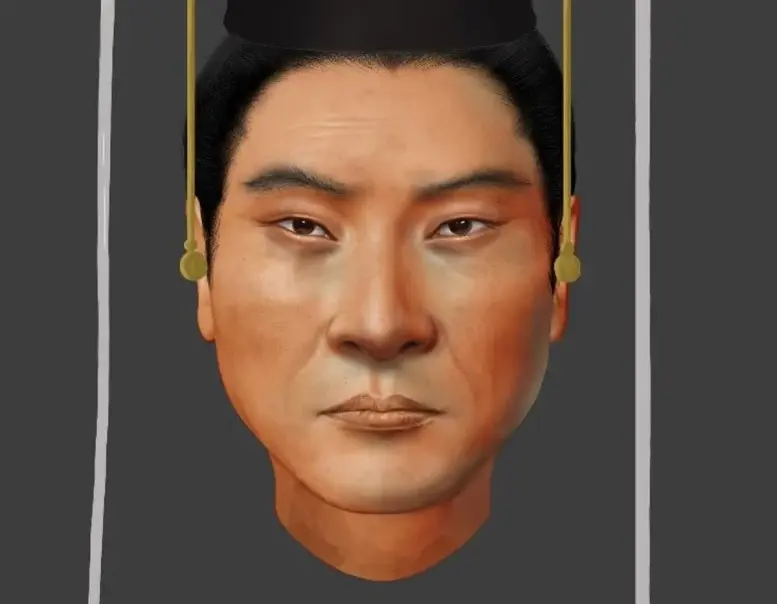Researchers have reconstructed the face of Emperor Wu of Northern Zhou using DNA from his remains, revealing typical East Asian features and suggesting that his premature death at the age of 36 may have been caused by a stroke. The study offers an understanding of the migration and integration of the Xianbei people in ancient China.
What did the ancient Chinese emperor look like 1500 years ago? A research team has reconstructed the face of Northern Zhou Chinese Emperor Wu using DNA obtained from his remains. A study recently published in the journal Current Biologysuggests that the emperor’s death at the age of 36 may have been related to a stroke. It also sheds light on the origins and migration patterns of the nomadic empire that once ruled parts of northeast Asia.
Emperor Wu was the ruler of the Northern Zhou Dynasty in ancient China. During his reign from 560 to 578 AD, Emperor Wu built a powerful army and unified the northern part of ancient China after defeating the Northern Qi dynasty.
Emperor Wu was ethnically Xianbei, an ancient nomadic group that lived in what is now Mongolia and northern and northeastern China.
“Some scholars have argued that Xianbei had an ‘exotic’ appearance, such as a thick beard, upturned nose and blond hair,” said Shaoqing Wen, one of the paper’s authors at Fudan University in Shanghai. said. “Our analysis shows that Emperor Wu had typical Eastern or Northeast Asian facial features,” he adds.
Reconstruction of Emperor U’s appearance
In 1996, archaeologists discovered the tomb of Emperor Wu in northwestern China, where they found his bones, including a nearly complete skull. With the advancement of ancient DNA research in recent years, Wen and his team were able to recover more than 1 million single nucleotide polymorphisms (SNPs) in his DNA; some of these contained information combined with Emperor Wu’s skin and hair color. The team reconstructed the face of the skull in 3D. The result shows that Emperor Wu had brown eyes, black hair, and dark to medium skin, and his facial features resembled those of modern North and East Asians.
“Our study brought historical figures to life,” said Pianpian Wei, co-author of the paper at Fudan University. “In the past, people had to rely on historical records or murals to imagine what ancient people looked like. We can directly reveal the appearance of Xiangbei people.”
Emperor Wu died at the age of 36, and his son also died young for no apparent reason. Some archaeologists claim that Emperor Wu died of an illness, while others claim that the emperor was poisoned by his rivals. Researchers analyzing Emperor Wu’s DNA found that the emperor had an increased risk of stroke, which may have contributed to his death. The finding is consistent with historical records that describe the emperor as having aphasia, drooping eyelids, and abnormal gait (possible signs of stroke).
Genetic analysis shows that the Xianbei people intermarried with ethnic Han Chinese during their southward migration into northern China. “This is important information for understanding how ancient humans spread across Eurasia and integrated with local populations,” says Wen.
The team next plans to study people living in the ancient city of Chang’an in northwestern China by examining their ancient DNA. Chang’an was the capital of several Chinese empires over the millennia and the eastern terminus of the Silk Road, an important Eurasian trade network from the 2nd century BC to the 15th century. Researchers hope DNA analysis can reveal more information about how people migrated and exchanged cultures in ancient China.













